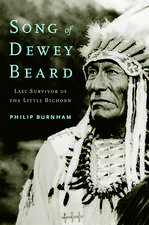A House in the Sun: Modern Architecture and Solar Energy in the Cold War
Autor Daniel A. Barberen Limba Engleză Hardback – 8 dec 2016
Preț: 362.03 lei
Preț vechi: 435.10 lei
-17% Nou
Puncte Express: 543
Preț estimativ în valută:
69.27€ • 72.52$ • 57.32£
69.27€ • 72.52$ • 57.32£
Carte tipărită la comandă
Livrare economică 26 martie-01 aprilie
Preluare comenzi: 021 569.72.76
Specificații
ISBN-13: 9780199394012
ISBN-10: 0199394016
Pagini: 352
Ilustrații: 136
Dimensiuni: 180 x 257 x 20 mm
Greutate: 0.98 kg
Editura: Oxford University Press
Colecția OUP USA
Locul publicării:New York, United States
ISBN-10: 0199394016
Pagini: 352
Ilustrații: 136
Dimensiuni: 180 x 257 x 20 mm
Greutate: 0.98 kg
Editura: Oxford University Press
Colecția OUP USA
Locul publicării:New York, United States
Recenzii
Barber's insights on solar architecture build upon the classic works on architecture and technology from Giedion, Mumford, and Banham as well as the twentieth-century histories of Ecological Architecture and Building Science. His emphasis on the researchers and practitioners who designed, built, and operated experimental houses shows how solar housing design contributed to new conceptions of culture and society in an era of increasing industrialization and globalization.
[E]ngaging and wonderfully illustrated work. A House in the Sun provides a nuanced optimism that such bleak conditions can also be the springboard to action and can reconfigure how architecture sees itself, empowering it as a cultural tool that moderates political, social and environmental impacts.
Barber eloquently reveals how architecture became subservient to larger global forces of managerial politics and how the language of the modern solar house has functioned as a vessel to endow efforts of harnessing clean energy, as opposed to the dirty extraction of fossil fuels. Overall, Barber's richly illustrated book brings an astonishing number of unexplored histories and resources of the early postwar period to light, unwrapping the convoluted ethics of interdisciplinary experimental collaborations that we now effortlessly address as environmental concerns.
A House in the Sun is a foundational text for a new expanded history of architecture's relationship to environment. In it, both the house and the sun undergo a fascinating series of formal, historical and theoretical phase-shifts, each altering the other's structures of transmission, reflection, absorption and radiation.
A House in the Sun carefully articulates the complex, and often tacit, role of architects in the postwar entanglement of technology, politics, economics, and ecology, especially in the United States ... With clarity, breadth, and great detail, Barber articulates the bright prehistory of the transformations of the architect in the solar-house era ... A House in the Sun is a robust and generous contribution that will help architects and historians to better conceptualize and situate their practices within the complexity of architecture and energy in the United States.
The author provides a thorough, in-depth historical study of the rise and fall of solar houses, the key players (ranging from architects to academics) involved, and the extensive innovation and experimentation generated and relayed through exhibitions, publications, and competitions. Detailed black-and-white and color illustrations are strategically placed to enhance the text. A well-researched prequel to any book on mid-century modern or postwar energy policy ... Recommended.
[E]ngaging and wonderfully illustrated work. A House in the Sun provides a nuanced optimism that such bleak conditions can also be the springboard to action and can reconfigure how architecture sees itself, empowering it as a cultural tool that moderates political, social and environmental impacts.
Barber eloquently reveals how architecture became subservient to larger global forces of managerial politics and how the language of the modern solar house has functioned as a vessel to endow efforts of harnessing clean energy, as opposed to the dirty extraction of fossil fuels. Overall, Barber's richly illustrated book brings an astonishing number of unexplored histories and resources of the early postwar period to light, unwrapping the convoluted ethics of interdisciplinary experimental collaborations that we now effortlessly address as environmental concerns.
A House in the Sun is a foundational text for a new expanded history of architecture's relationship to environment. In it, both the house and the sun undergo a fascinating series of formal, historical and theoretical phase-shifts, each altering the other's structures of transmission, reflection, absorption and radiation.
A House in the Sun carefully articulates the complex, and often tacit, role of architects in the postwar entanglement of technology, politics, economics, and ecology, especially in the United States ... With clarity, breadth, and great detail, Barber articulates the bright prehistory of the transformations of the architect in the solar-house era ... A House in the Sun is a robust and generous contribution that will help architects and historians to better conceptualize and situate their practices within the complexity of architecture and energy in the United States.
The author provides a thorough, in-depth historical study of the rise and fall of solar houses, the key players (ranging from architects to academics) involved, and the extensive innovation and experimentation generated and relayed through exhibitions, publications, and competitions. Detailed black-and-white and color illustrations are strategically placed to enhance the text. A well-researched prequel to any book on mid-century modern or postwar energy policy ... Recommended.
Notă biografică
Daniel A. Barber is an Assistant Professor of Architecture at the University of Pennsylvania, where he teaches the history of modern architecture. He has published articles in Grey Room and Technology and Culture.













